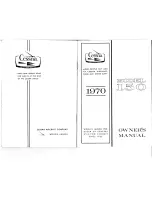
Launch:
The
SOL SONIC
is easy to launch. When you are ready to take off, hold
the A-risers and the control handles in your hands.
To make it easier to distinguish between the different risers, the A-lines
and A-risers are different colors. Hold your arms stretched back and
down as an extension of the A-lines. Before continuing, a final check of
the canopy is important.
A good progressive run helps your
SOL SONIC
to inflate evenly and come
up quickly
.
After the initial effort to get the inflation the pilot must keep a forward
pressure on the risers ‘A’
(pushing them forward and not down)
, until the
canopy be directly over the pilot's head. After the initial effort of inflation,
keep applying forward pressure on the A-risers
(pushing them forward not
pulling down)
until the pressure on the A-risers eases.
In that moment apply a very small amount of brake if there is a need to
an eventual correction for any drift in order to keep it above your head.
Moving your body to the center of the glider is the best method of
correction if there is sufficient room. The pilot looks up and checks that
the canopy is fully inflated with no line tangles.
In this moment the Pilot takes a decision of launching or not. The reverse
launch in a strong wind is also easy to carry out. As this launch technique
can be difficult and can result in the pilot taking off with twisted risers, it
is recommended to practice the reverse launch on a training hill first.
Warning
:
•
The minimum speed for the paraglider is high and it demands a good
knowledge and experience during this phase.
Take-off with Tow:
SOL SONIC
does not require any special step to be towed. However,
during the launch it must be avoided a small angle of the cable in relation
to the ground.
Flight:
SOL SONIC
is a smaller paraglider than others and the velocities are
higher and the reactions during the flight are more dynamic. And this
demands knowledge and a correct Pilot’s interference in all situations.
Rain and Humidity:
It is not recommended to flight with
SOL SONIC
in rainy days or with wet
paraglider because the maneuvers during the flight are more sensitive
and it may occur a paragliding in the B-stoll way or with much brake.
Land:
SOL SONIC
requires a precise land control because its speed is much
higher than other models.
LOOKING AFTER YOUR PARAGLIDER
Storage:
Store the
SOL SONIC
in a dry space away from chemicals and UV light.
Never pack up or store the glider when wet. This shortens the life of the
cloth. Always thoroughly dry your glider before packing or storage.
Cleaning:
Clean the paraglider if only absolutely necessary with water and a soft
sponge. Do not use any chemicals for cleaning since they can
permanently damage the cloth. Stubborn stains or animal droppings
should be immediately removed, rinsed with water and then thoroughly
dried.
Packing:
We recommend folding your glider using the
“accordion”
system. This
system avoids folding the reinforcements and helps to maintain the
launch and flying characteristics of your paraglider.



























